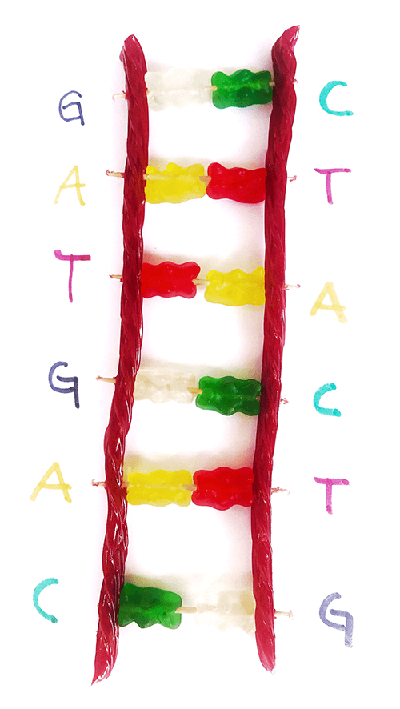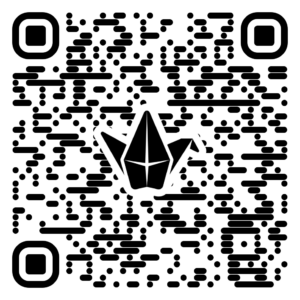Code of Life -Strawberry DNA Mystery
The Berry Bliss Mystery: A Forensic DNA Challenge!
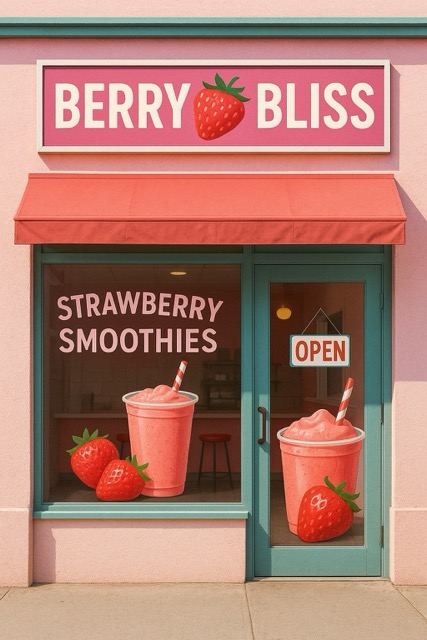
A bustling local smoothie shop, “Berry Bliss,” is known for its signature strawberry smoothies. A customer, Ms. Johnson, claims her smoothie contains raspberries instead of strawberries and has taken to social media to accuse the shop of false advertising. The shop’s owner, Mr. Patel, vehemently denies the claim, asserting they only use fresh strawberries. The situation escalates, and a group of high school science students steps in to help resolve the issue using DNA evidence.
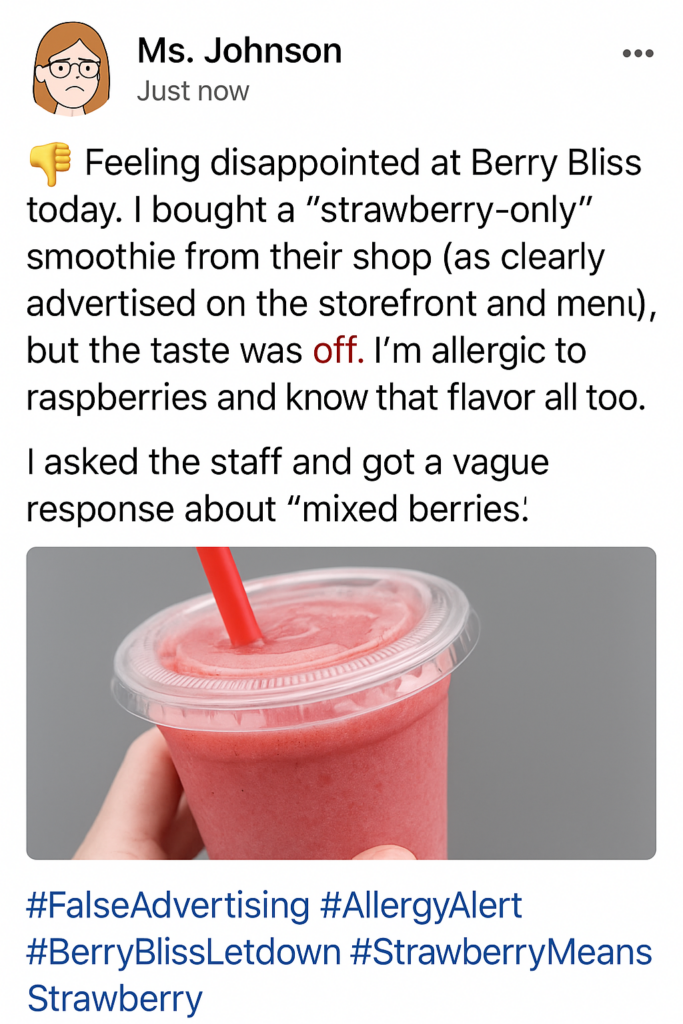

Question:
How can we scientifically determine if the smoothie contains strawberries or raspberries?
How angry was Ms. Johnson?
Step 1:
Watch the video below to learn how to extract DNA from Strawberries
Following the instructions from the video and the image below recreate the process to extract DNA from the Berry Bliss smoothie sample.
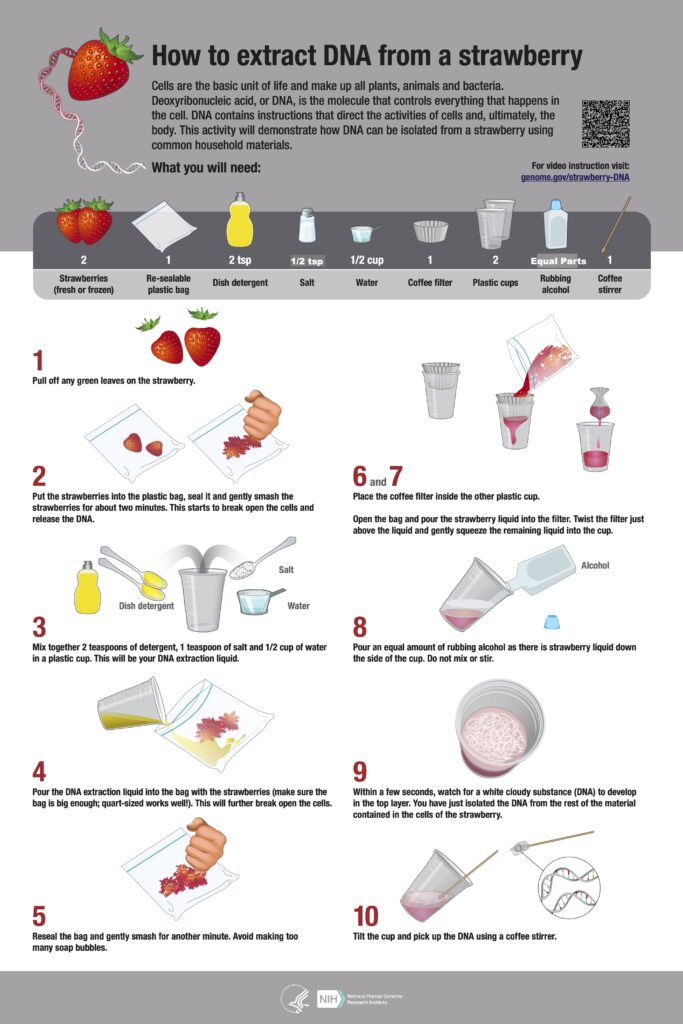
Questions:
What surprised you about the DNA? Is it what you expected?
Scan the below QR code and post pictures of your DNA extraction.
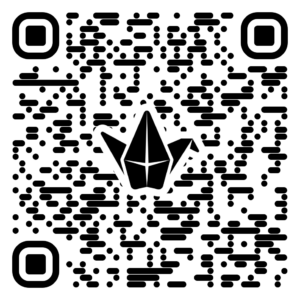
Step 2: Sequence DNA using the smoothie sample
With the forensic lab closed on Saturday, Mr. Patel generously offers the students access to the shop’s toppings to create a DNA model and better understand the structure of genetic material. He sets up a workstation with various toppings, encouraging the students to get creative. Twizzlers represent the sugar-phosphate backbone of the DNA double helix.
Gummy bears are used as placeholders for base-pairing connections, showing how A pairs with T and C pairs with G. Toothpicks hold the bases together, connecting the complementary strands.
Solve the genetic code using the DNA sequence below:

Check out the candy example below:
Bonus challenge!
Figure out the other side of the helix using the base pairing rules (A pairs with T, C pairs with G)
Scan the below QR code and post pictures of your candy DNA sequence.

Step 3: But is it Protein Packed?
You successfully proved that the smoothie shop uses strawberries and not raspberries by analyzing DNA evidence, Ms. Johnson, though slightly embarrassed, isn’t ready to concede defeat entirely. Now she’s questioning whether these smoothies have enough protein to justify being called ‘protein-packed.’
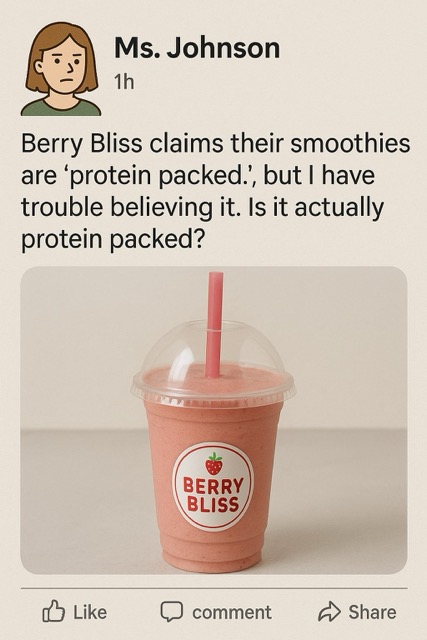
Test for protein!
Procedure:
Label 2 Test Tubes: “Smoothie Sample” and “Control”
Prepare the Samples: Use a pipette to place 5 mL of the smoothie sample into the “Smoothie Sample” test tube. Add 5 mL of distilled water to the “Control” test tube.
Add Biuret Reagent: Using a pipette, carefully add 2 mL of biuret reagent to each test tube.
Mix the Contents: Gently swirl or shake the test tubes to mix the biuret reagent with the samples.
Observe the Reaction: Wait for 1-2 minutes for the reaction to occur. Record the color of the solution in each test tube.
Expected Results: If protein is present, the solution will turn purple (positive result). If no protein is present, the solution will remain blue (negative result).
Compare Results: Compare the color of the smoothie sample to the control to confirm the presence of protein.


Additional Activity:
Test other drinks for protein
Scan the below QR code and post pictures of your Biuret Test.
Discussion:
Watch the below video and discuss the use of Forensic DNA Phenotyping and litter in Hong Kong.
Want to learn more about Forensic DNA Phenotyping? Check out the linked pdf and video Making Sense of Forensic Genetics. What Can DNA Tell You About Crime?
and video

